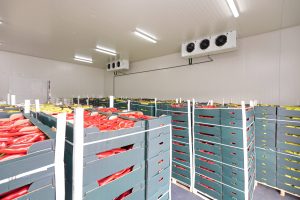What Should Be Avoided in Cold Storage?
Introduction
Cold storage is a vital component of various industries, including food and pharmaceuticals. It involves the preservation of perishable items at low temperatures to maintain their quality, freshness, and safety. However, despite its importance, there are certain practices and substances that should be strictly avoided in cold storage facilities. In this article, we will discuss the key elements that must be kept away from cold storage to ensure optimal conditions for storing perishable goods.
1. Temperature Fluctuations
The Importance of Stable Temperatures
Maintaining stable temperatures is crucial in cold storage facilities. Fluctuations in temperature can have detrimental effects on the quality and safety of stored products. Rapid temperature changes can cause condensation, which leads to the formation of ice crystals and moisture buildup. This, in turn, can compromise the integrity of packaging, promote bacterial growth, and accelerate product deterioration. Therefore, it is essential to invest in reliable temperature control systems and regularly monitor temperature levels to avoid fluctuations. https://commgen.com.au/
The Risk of Inadequate Insulation
Cold storage facilities must have proper insulation to prevent heat transfer from the surroundings. Inadequate insulation can result in temperature fluctuations and energy loss. Insufficient insulation can also lead to the formation of cold spots and hotspots within the storage area, increasing the risk of product spoilage. Therefore, cold storage facilities should be well-insulated using materials with high thermal resistance to maintain a consistent and controlled environment.

2. Poor Air Circulation
The Importance of Adequate Airflow
Proper air circulation is essential in cold storage to ensure uniform temperature distribution and prevent the formation of stagnant air pockets. Stagnant air can lead to uneven cooling, which affects the quality and longevity of stored products. It can also create conditions favorable for the growth of molds and bacteria. Cold storage facilities should have well-designed ventilation systems that facilitate continuous air movement to maintain optimal conditions throughout the storage area.
Avoidance of Blocked Air Vents
Blocked air vents can severely disrupt the airflow within a cold storage facility. Common culprits of blocked vents include improperly stacked products, debris, or equipment placed in front of vents. Blocked vents hinder proper air circulation and can lead to temperature inconsistencies and an increased risk of spoilage. Regular inspections should be conducted to ensure that air vents remain unobstructed and airflow is not compromised.
3. Contamination Risks
The Dangers of Cross-Contamination
Cross-contamination poses a significant risk in cold storage facilities. It occurs when harmful microorganisms, allergens, or chemicals from one product contaminate another. This can happen through direct contact, airborne particles, or improper handling practices. To prevent cross-contamination, it is crucial to implement strict sanitation protocols, use appropriate packaging, and store products with different risk levels separately.
Avoidance of Chemical Contaminants
Chemical contaminants, such as cleaning agents or pesticides, should never come into direct contact with stored products. These substances can pose serious health risks if consumed or absorbed by the products. Cold storage facilities should establish clear protocols for handling chemicals and ensure that they are stored in designated areas away from the stored goods. Additionally, proper ventilation systems should be in place to prevent the accumulation of airborne chemical particles.
4. Improper Stock Rotation
The Significance of Stock Rotation
Stock rotation is crucial in cold storage to ensure that products are used or sold in the order they were received. This practice helps prevent the accumulation of expired products and minimizes waste. Improper stock rotation can result in expired or deteriorated products being inadvertently used or sold, leading to financial losses and potential health risks for consumers.

The Importance of First-In, First-Out (FIFO)
The First-In, First-Out (FIFO) method is commonly employed in cold storage facilities to manage stock rotation effectively. This method involves using the oldest products first, ensuring that newer items are stored behind them. By following the FIFO principle, products with shorter shelf lives are used or sold before those with longer expiration dates. Implementing proper labeling, clear product identification, and regular inventory checks are essential to maintain an organized stock rotation system.
5. Inadequate Pest Control
The Threat of Pests in Cold Storage
Pests pose a significant threat to cold storage facilities as they can contaminate products and cause substantial financial losses. Common pests in cold storage include rodents, insects, and birds. These pests can enter through openings, cracks, or improperly sealed doors and can quickly multiply if not addressed promptly. Implementing effective pest control measures, such as regular inspections, sealing entry points, and using appropriate pest deterrents, is crucial to prevent infestations and safeguard the integrity of stored goods.
Avoidance of Chemical Pesticides in Storage Areas
While pest control is essential, it is important to avoid using chemical pesticides directly in storage areas. Chemical residues from pesticides can contaminate products and compromise their safety and quality. Instead, cold storage facilities should focus on preventative measures such as maintaining cleanliness, proper waste management, and employing non-toxic pest control methods like traps and natural deterrents.
Conclusion
In summary, maintaining optimal conditions in cold storage facilities is vital to ensure the quality, freshness, and safety of perishable goods. To achieve this, temperature fluctuations must be avoided by investing in reliable temperature control systems and adequate insulation. Proper air circulation should be ensured through well-designed ventilation systems and regular inspections of air vents. Cross-contamination risks can be minimized by implementing strict sanitation protocols and storing products with different risk levels separately. Proper stock rotation practices, such as employing the FIFO method, help prevent the accumulation of expired products. Finally, effective pest control measures and avoidance of chemical pesticides within storage areas are crucial to protect stored goods from pests and contaminants.

Recent Comments